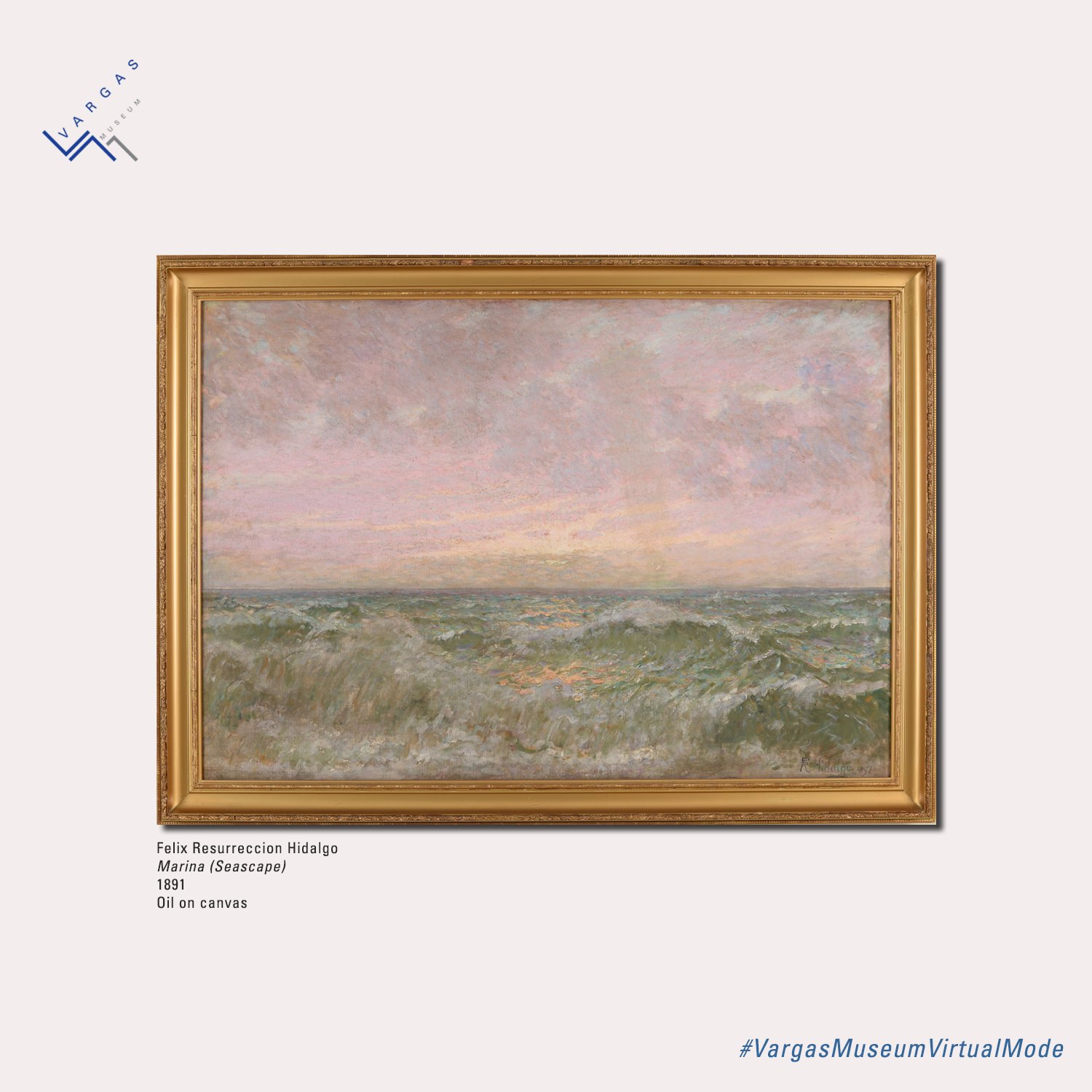Not much has been written about “Marina (Seascape),” so I wonder where the 36-year-old Félix Resurrección Hidalgo was when he painted it in 1891. Was he painting en plein air like the impressionists in Europe? Or was he cooped up in his studio, mainly using his memories and imagination of watching the sea?
I would like to think that Hidalgo freely worked on a beachside, possibly in France or Spain, far enough so that his easel and canvas would not be touched by the salty sea. This sea, whether conjured from sight or memory, sits at the bottom third of the canvas, mostly moss green but also littered with interesting colors such as light wood brown on the waves crashing at the left, faint white for the sea foam, and golden flecks at the midsection to embody the presence of the sun which is nowhere to be found. There are also sporadic traces of violet, which are more apparent on the horizon, to reflect the soft peach and citrine sky above. The sea feels dynamic with thick and fast brushstrokes, while the sky is calm with flat, almost imperceptible strokes, save from the periwinkle and chestnut brown clouds with short and quick brushwork.
The more I look into the painting (albeit just a photograph, and not the real one), the more I see details that I haven’t noticed before. What else will I discover when I face the actual painting? This reminds me that I haven’t really looked at the skies again, thanks to the towering houses around ours, blocking the view from our windows. Now that we are locked inside our homes due to the pandemic, we appreciate what we normally take for granted when we can still normally go outside, such as the ever-changing color of the sky or the warmth of the sun. For now, I’ll settle with admiring nature safely from a distance, looking at artworks to transport myself to places such as this seascape from Hidalgo which – I hope – he had the liberty to see and bask in.
This was originally published in the Facebook page of UP Vargas Museum.

Leave a Reply